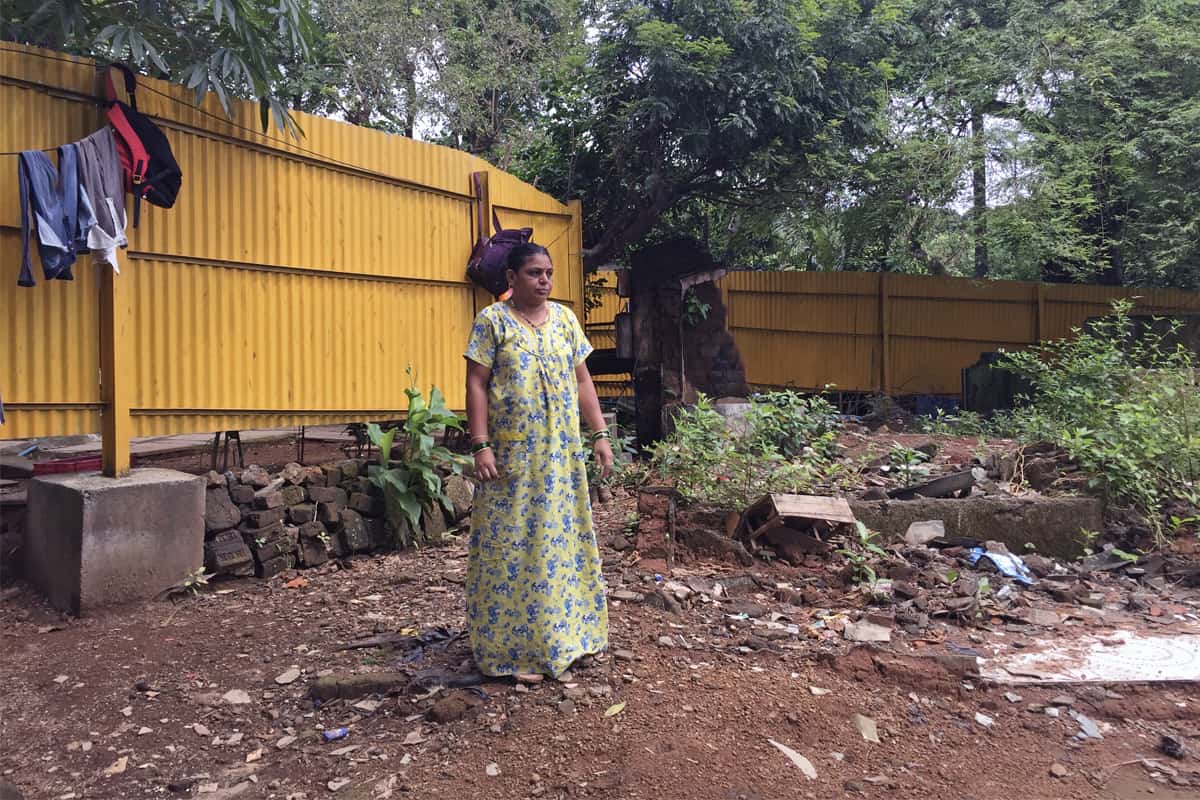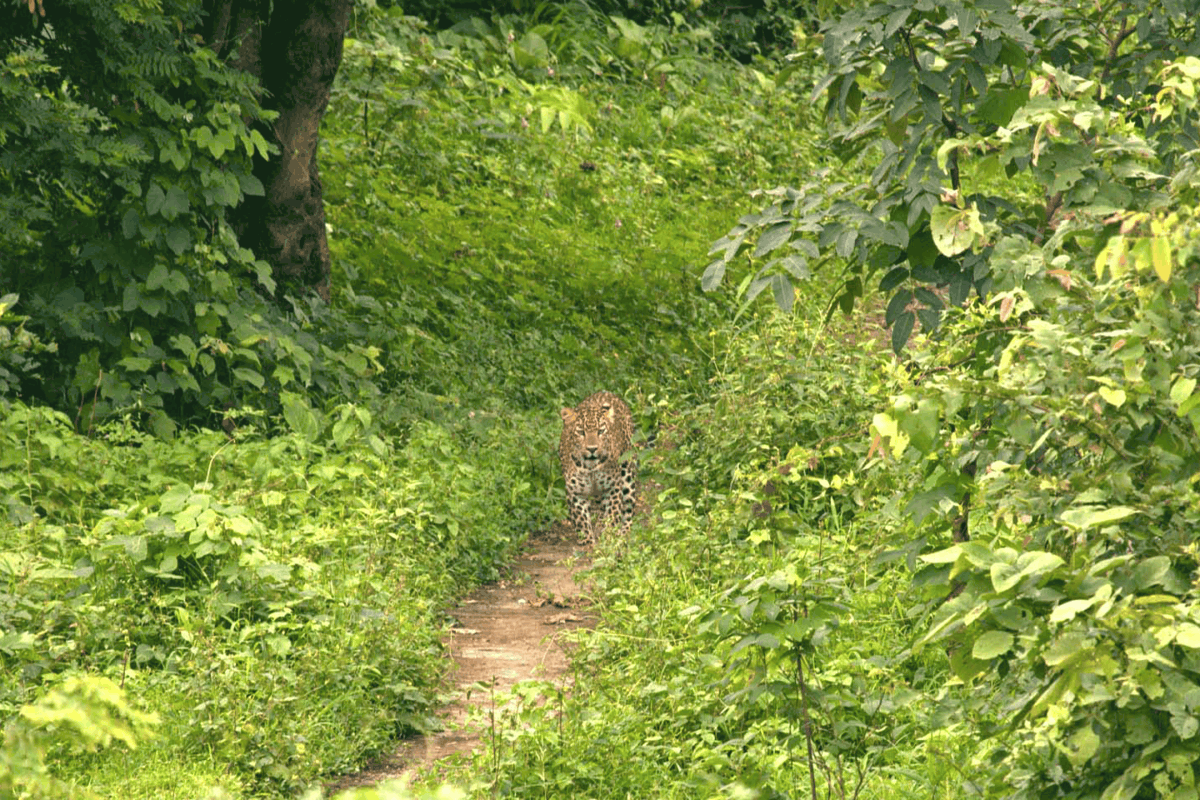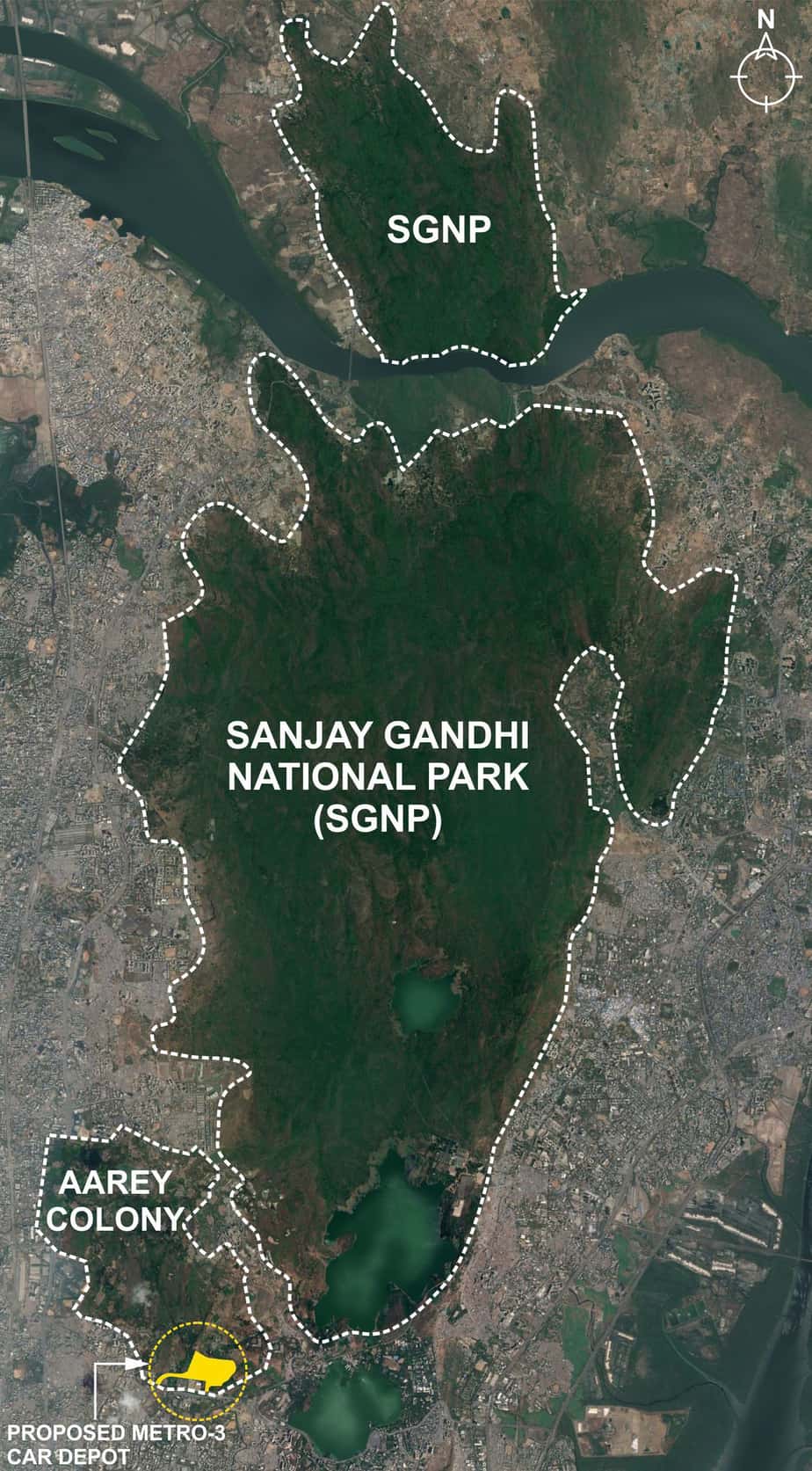In a relief for green crusaders in India’s commercial capital, Mumbai, the Supreme Court, on October 7, ordered status quo in the Aarey tree-felling case and directed the Bharatiya Janata Party (BJP)-led Maharashtra government not to cut down any more trees for a controversial metro car shed project till the next hearing on October 21.
The same day, October 21, as Aarey’s fate will be decided by the Supreme Court, the people of Mumbai will go to vote for the government that will take forward the decision over the next five years.
Assembly elections for the state of Maharashtra are scheduled on October 21, 2019. Mumbai and the adjoining region sends 36 legislators in the 288-member Maharashtra legislative assembly. The contest is mainly between the Bharatiya Janata Party-Shiv Sena alliance and the Indian National Congress-Nationalist Congress Party alliance.
The Aarey issue has provided fodder to incumbent BJP’s political rivals and has fired up the poll-scene dividing the metropolis in two camps. On one side are the state government, BJP supporters and the Mumbai film industry’s influential actors like Amitabh Bachchan and Akshay Kumar, who express support to the metro project. On the other side, that is supporting environment activists, are BJP’s ally Shiv Sena and rivals Congress, Nationalist Congress Party, Maharashtra Navnirman Sena and the Aam Aadmi Party, thousands of citizens objecting to the felling of trees and three dozen citizens groups. The leader of the Shiv Sena youth wing, Aaditya Thackeray has been vocally against the metro project’s actions in Aarey.
The urgent hearing by the Supreme Court followed a series of protests starting on the night of October 4 when the Mumbai civic authorities started cutting trees on a large scale at Aarey colony. This was just a few hours after the Bombay High Court dismissed four pleas that were opposing the authority’s decision to cut 2,646 trees in Aarey Milk Colony, for the metro project. The Bombay High Court had directed the petitioners to approach the apex court and the National Green Tribunal for respite.
At the apex court, observing that it “appeared Aarey was a forest at some point of time”, the court asked the state to submit a status report on the number of trees felled so far and the afforestation by the authorities. Solicitor General Tushar Mehta told the court on behalf of the Maharashtra government, “What is required to be cut has been cut. No further cutting of trees is required.”
The state government interpreted the court order as “status quo” only for the cutting of trees; it said construction of metro car shed can be carried out at the area cleared at Aarey. “There is no status quo on construction on the 33 hectares of Aarey land that has been cleared,” said Maharashtra government’s lawyer Nishant Katneshwarkar.
The issue has been simmering since 2015 when the metro project was first announced at the site but it gathered momentum over the last one year, with common citizens and students also joining in, following various orders issued by the state, civic body, tree authority, judicial and quasi-judicial bodies like the NGT on the fate of one of the prominent green patches of urban Mumbai.

Citizens assembled to protest at Aarey after authorities began cutting trees just a few hours after the Bombay High Court dismissed four pleas that were opposing the authority’s decision to cut 2,646 trees. Pic: Aarey Group
The Aarey Milk Colony, an erstwhile government dairy farm, sprawls over 1,300 hectares in the city’s suburbs and is Mumbai’s second-largest green cover after the Sanjay Gandhi National Park. In the midst of urban Mumbai’s western suburbs, the green patch has been identified for a metro car-shed for the Mumbai Metro Rail Corridor line which will run between south and north Mumbai.The swift move to fell trees at Aarey at night on October 4, prompted citizen campaigners to rush to the heavily guarded site. Many were detained and arrested by the police.
The entire incident evoked strong emotions across the country with many condemning the government’s move to fell the trees.
Several celebrities from the film industry in Mumbai also expressed their displeasure and anger on social media. However, the actors themselves came under attack alleging that Film City in Mumbai, an integrated film studio, is also on land from Aarey.
Biodiversity and floodplain at stake
The Rs. nine billion (Rs. 900 crore) car-shed for the under-construction Colaba-Bandra-SEEPZ Metro Line above the ground will control metro operations. Prime Minister Narendra Modi laid the foundation stone of the project on September 7, 2019.
“The car shed will gradually open up the entire Aarey for construction which will be a disaster for Mumbai. A large part of the Aarey Milk colony has already been encroached upon,” Rohit Joshi, an environment activist, told Mongabay-India. Joshi is part of the Aarey Conservation Group (ACG), which has been spearheading the Save Aarey campaign since 2015.
The Mumbai Metro Rail Corporation Ltd. (MMRCL) has earmarked 33 hectares, around 2.3 percent of the Aarey Colony land for the car shed which will require cutting of over 2,700 trees, as per the government.
The state estimates that over 7.5 million people travel in Mumbai’s suburban trains daily and the upcoming metro will serve as many passengers as suburban rails by 2034 easing the pressure off from the world’s most congested railways. The MMRCL claims significant afforestation has already been done in compensation for the trees cut. However, activists have been stressing that saplings can’t make up for the grown trees that are cut.
Amrita Bhattacharya, an activist with the Aarey Conservation Group, says, “rich biodiversity like Aarey takes hundreds of years to build up and cannot be re-planted overnight. Metro shed can’t be built at the cost of Mumbai’s largest natural air purifier.”
Activist Zoru Bhathena meanwhile is fighting to save the floodplain of the Mithi river that will be impacted by the construction at Aarey. Bhatena’s petition prompted the Supreme Court to seek status report of Mithi and the state’s measures to avoid a repeat of 2005.
“Mumbai had seen a deluge in 2005 with massive destruction. Aarey’s further destruction may lead to more such episodes,” said Bhathena. Floodplains, the flat land along the river, provides the space for rivers to spread their waters.
But Aarey is not just about trees. Anand Pendharkar, who is the founder of an environment trust SPROUTS explained that Aarey’s trees, grassland, bushes and marshes are also home to leopards, migratory birds, snakes, scorpions, spiders, butterflies and more species.
According to a list submitted to the IUCN last month, the area has more than 290 wild species of flora and fauna, such as leopard and rusty-spotted cats (classified as vulnerable).
In 2017, Maharashtra had approved Mumbai’s development plan wherein the land classification of 147 hectares in Aarey Milk Colony (34 hectares for metro car shed and 113 ha for a zoo) was changed from no-development zone to development zone. The HC upheld the state’s decision when the activists challenged it.
New species of scorpions and spiders discovered here. Two are even named after the colony –Heterophrictus aareyeneis (tarantula) and Lychas aareyensis (scorpion).
Tribals face displacement and loss of livelihood
Aarey is home to over 3,500 families of Warli adivasis and other tribal groups spread over 27 hamlets. Many of them face displacement now.
Prajapurpada hamlet near Birsa Munda Chowk that comes within the impacted area in Aarey, for instance, has seen 70 of over 80 families shifted to outside Aarey in a Slum Rehabilitation Authority building by the metro authorities. The remaining ten have survived the axe as they don’t fall in the project area.
“We stayed in Prajapurpada for generations and grew vegetables for livelihood. My house survived but the patch of the farm has gone so have the medicinal trees,” Asha Bhoye, a member of the local tribal community, told Mongabay-India.
Her husband Kishan Bhoye lost his tea-pan shop to the upcoming depot. “The government offered another shop but it was at such a cramped place that I refused,” Bhoye said.
He emphasised that most Prajapada families had applied for their land rights under the Forest Rights Act 2006 a decade ago but their claim was pending.

Asha Bhoye, a member of a tribal community residing inside Aarey, stands in front of the barricade raised by the authorities in front of her house. Pic: Kartik C/Mongabay.
Can metro-shed be shifted to another place?
The government claims that Aarey is not a notified forest and hence the land can be used by the government for the metro project but the activists claim otherwise.
The activists say they are not against the metro depot but the MMRCL’s choice of land for the same. “There are plenty of non-residential and industrial locations where car shed can be constructed,” said Amrita Bhattacharya.
As an alternative, the Aarey Conservation Group had suggested Kanjurmarg, 7.5 kilometres to the east of the current site, and six other locations. A technical committee, constituted by the state in 2015 to assess the environmental impact of the project had also recommended the Kanjurmarg plot.
But the MMRCL officials emphasise that Aarey is the most suitable place due to its connectivity to three major roads – the Jogeshwari-Vikhroli Link Road, Marol-Maroshi road and Goregaon-Mulund Link Road.
Is Aarey a forest or not?
From being part of the Borivali forests (now Sanjay Gandhi National Park) to becoming a government-owned dairy farm in 1949, subsequently being included in Borivali forests again in 1980 (on paper) and then opening the part of colony for commercial purpose in 2014, this piece of land has had quite a bureaucratic journey.
Stalin Dayanand from NGO Vanashakti said that about three-fourths of the Aarey Colony which was categorised as “unclassed forest in the SGNP” was included in the SGNP in 1969, as per a government document obtained through the Right to Information (RTI) Act. An unclassed forest is recorded in land records as forests, but not reserved or protected by the government.
“There are no restrictions on tree felling and grazing inside unclassed forests, but by virtue of being inside the national park, Aarey is entitled to extra protection,” insists Stalin.
In 1969, the revenue and forests department (which still allots land in this same area) transferred 2,076 ha of land to the Borivali National Park.
The divisional manager of the park, at that time, wrote to the state government to notify this land as a forest so that the Wildlife Protection Act and the Forest Conservation Act are applied and the forest department gets greater power to protect it legally, Stalin explained.
Activists point out that a 1980 document also confirms the same but there are no documents available to show that the area comes under the forest department even though the department still guards the colony. Forest officials refused to comment over the issue citing poll code.
In 2016, the Maharashtra government told the NGT that the land had not been recognised as forest anywhere in the records, in response to the Vanashakti and ACG petitions which were seeking a forest tag for Aarey on three grounds – tree count, flora-fauna and the colony being part of the Sanjay Gandhi National Park.
The NGOs had cited Mumbai’s development plan 1991 wherein the land close to metro depot site was shown as forests.
Meanwhile, on December 5, 2016, the central government’s environment ministry declared buffer zone for SGNP excluding 165 hectares of Aarey for construction activities. The NGT disposed of activists pleas seeking forest tag for Aarey in September 2018 stating that “only a High or Supreme Court could give them relief.”
A study conducted by Rajendra Shinde, head of the botany department at St Xavier’s College, Mumbai, states that “there are 36 types of trees in Aarey belonging to forest species” and thus there is no doubt that it is a forest.
However, declaring Aarey as forest will have repercussions. “It will not only jeopardise the proposed metro-shed, zoo and the real estate projects but also the BJP’s Hollywood style makeover plan for the film city in Aarey,” said a Maharashtra government official requesting anonymity.
The government believes benefits of metro far outweigh the trees
MMRCL’s Managing Director Ashwini Bhide refused to comment on the issue citing the “election code of conduct” in force.
But in her earlier statements to media, she had said that benefits of the metro far outweigh the number of trees it will remove and that seven days of Metro operation will cut an amount of CO2 equivalent to that absorbed by 2,646 trees in a single year.
While campaigners question the dual stand of ruling parties, BJP’s spokesperson Shaina N.C. said, “Post elections, we will sit with Shiv Sena and sort this issue out.”
[This story was first published on Mongabay. It has been republished with permission. The original article can be found here.]

